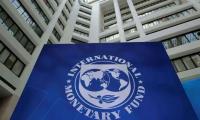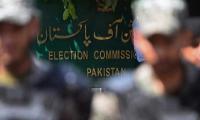There has been lots of commentary on the government's response to the pandemic. To start off with something positive: Pakistan government’s response has been better than what has happened in India.
PM Modi suddenly announced a lockdown with no prior notice. This decision brought immense misery to the migrant workers in India, who at times had to walk for days to reach back to their villages. There was immense chaos for the poor in India; something that we in Pakistan were to an extent saved from by the provincial and federal governments despite lockdown in Sindh and partial lockdown in rest of the country.
In terms of getting on with the basics in Pakistan, there is no doubt that the federal government badly mucked up the Iran-returned zaireen’s quarantine some weeks back in Taftan. It is a pattern that continues on a mini scale in other places as well. In such quarantines, the government often locks up Covid-19 positive cases along with other suspected cases.
This is a sure way to transmit the disease to other negative cases in quarantine. The SOP for all quarantines should be to provide isolated facilities to all; so that confirmed cases of the coronavirus are not mixed up with those being watched under observation. Otherwise, quarantine centres become little incubation factories for the spread of the disease.
Places that offer home quarantine to mild cases of Covid-19, they are relatively easy to manage (provided self-isolation is strictly observed). In those places that impose a condition on all positive cases to be in hospitals, it is important to segregate the mild cases of the disease from those who have acute or severe symptoms. It would help rationalize the use of scarce health resources and focus the attention on saving lives that are in real danger.
Therefore, it is important to establish a fever clinic on the lines of what has been achieved in China; and those clinics can refer mild cases to isolation centres rather than over-burdening the hospitals that should be dedicated to treating the 20 to 30 percent severe and critical patients. In some places in Europe, they have advised those with mild symptoms to self-isolate and stay at home.
At the time of filing of this article, there is some news that Sindh is likely to lift its strict lockdown after April 14. This news was expected. Lockdowns cannot stay forever, particularly in countries like Pakistan where they have a hugely adverse impact on the poor. One strategy to balance the needs between ensuring health safety for prevention of Covid-19 and keeping the economy afloat is to continue with a shut-open strategy where lockdowns are relaxed to help the reeling economy and are re-imposed on well-calibrated data to flatten the curve of the disease and allow the health system space to manage the outbreak.
A better strategy to deal with the balancing between health and economic needs is to try to emulate what South Korea, Singapore, Hong Kong, and Taiwan have achieved. They have undertaken massive testing of the disease, isolated the patients, traced the contacts (sometimes with mobile phone apps) that have come in contact with positive cases and isolated them as well.
In other words, a well-implemented strategy of testing, tracing, and isolation has spared the massive China-style lockdowns for these above-mentioned countries. It is important to learn from those countries and try to emulate them, given that Pakistan cannot afford a shut-open strategy due to economic compulsions.
In terms of providing relief to the poor, given the harshness of the impact of lockdowns on the deprived sections of society, there is a hybrid approach at work. Other than BISP’s almost ten-year-old data for the lowest quintile of the poor, the government does not have fresh data on the poor under the Ehsaas programme yet. So disbursements are going to be made to BISP beneficiaries in addition to the new criteria for self-registration under the Ehsaas programme. The database will determine those to be held eligible and ineligible. The third middle category will be told to contact their district administration for verification of their status.
Informed analysis is of the view that there is dire shortage of reliable new data on the poor, other than the National Socio-economic Registry’s old data. The Ehsaas programme of the PTI was supposed to refresh the database, something that it has not been able to achieve so far. Hence, the new drive for self-registration is the only option and the government is undertaking it.
Another aspect coming out of the analysis is the focus on the role of local governments. Various democratic governments have consistently sidelined this third tier of government and the present dispensation is no different. It is critical to involve the local governments in the relief efforts. Right now the focus is on district administration, particularly in places where the local government elections have not been held in time. Rather than coming up with a new Corona Tiger Force, it is best to streamline the role of local governments while providing relief to the poor.
In a country where historically the emphasis has been on territorial security rather than human security and human development, Pakistan seems to be striving to deal with the pandemic. In the short-term, there is a need to tie the ends and present the best foot forward. In the long run, there is a need to change the direction of public spending on health, education, water, and climate change.
Pandemics, water shortages, and climate change are going to pose real dangers to us even in the future and we should not limit ourselves to conventional security parameters.
The writer is an Islamabad-based social scientist.
Email: fskcolumns@gmail.com
A health worker administers polio vaccine drops to a child during a door-to-door polio vaccination campaign in Lahore,...
Armed militants of the banned Tehreek-e-Taliban Pakistan pose for a photograph in Orakzai Agency. —...
An aeroplane of the national flag carrier of Pakistan is seen in this file photo. — AFPWhile Pakistan considers...
Representational image of a graph depicting various variables. — APP/FileInitiated by the centre and fiercely...
In this picture taken on April 16, 2023, people throng a market area during shopping in Lahore. — AFPOne of the...
Honour crimes also target men. In Sikandar Ali Lashari vs The State, SHC upheld conviction passed by ATC for honour...







